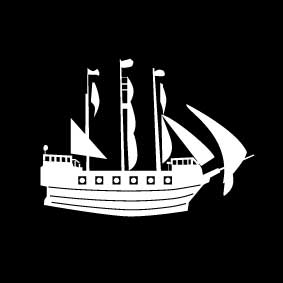Rules around the inn of the whitecoats (1) in 1599
The "stately existing inn in Staad"
In 1599, the Cardinal Bishop von Constanz and the Teutonic Knights of Mainau (2) agreed on common sailing regulations for the shipmen at Meersburg and Staad.
It says, among other things, that the ferrymen should absolutely refrain from cursing, swearing, insulting and scolding. When they were lying on the shore with their Segner (3) or their “steed ships”, which held a wagon with 4 to 6 horses or 4 to 6 loads (4) of wine, they should no longer, as it had been before , “fill up theirselves with wine in the inns”.
They shouldn’t rub strangers in the pubs either. Only as far as the two chapels that stood close to the crossing at Meersburg and Staad they were allowed to meet passengers and offer their services.
This was an extract from the Lake Constance Chronicle

The house as it was from 1662. Photograph from 1897.



